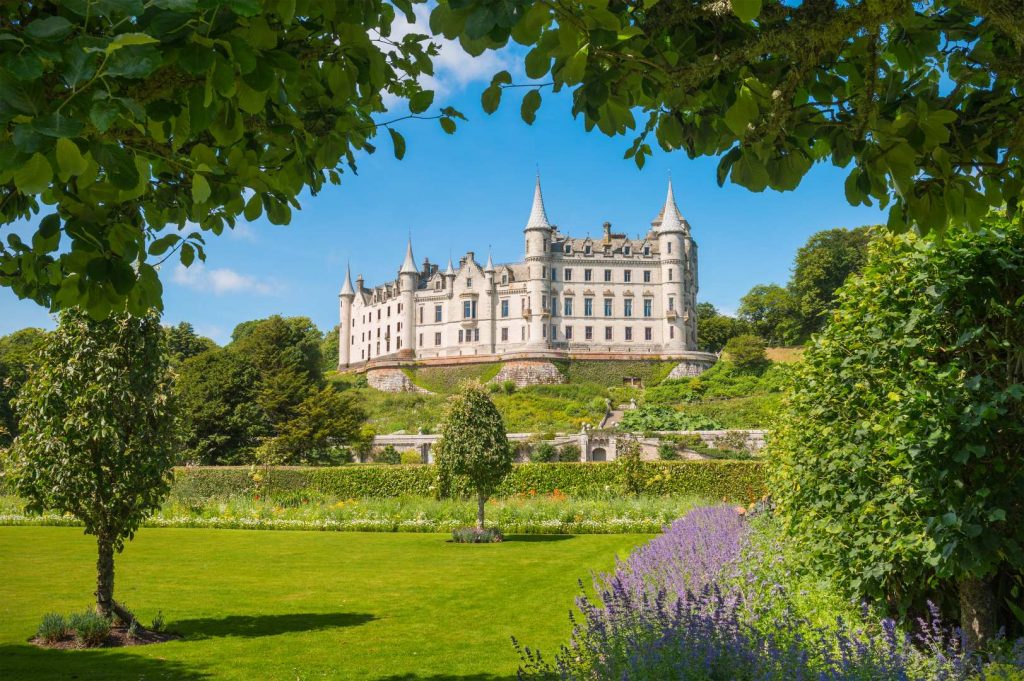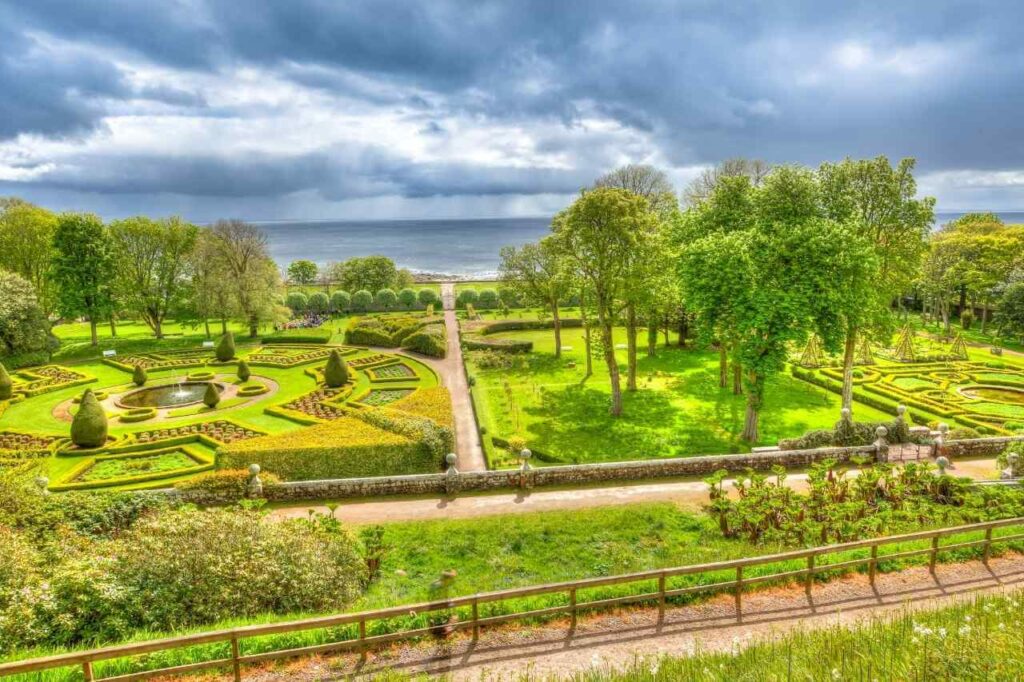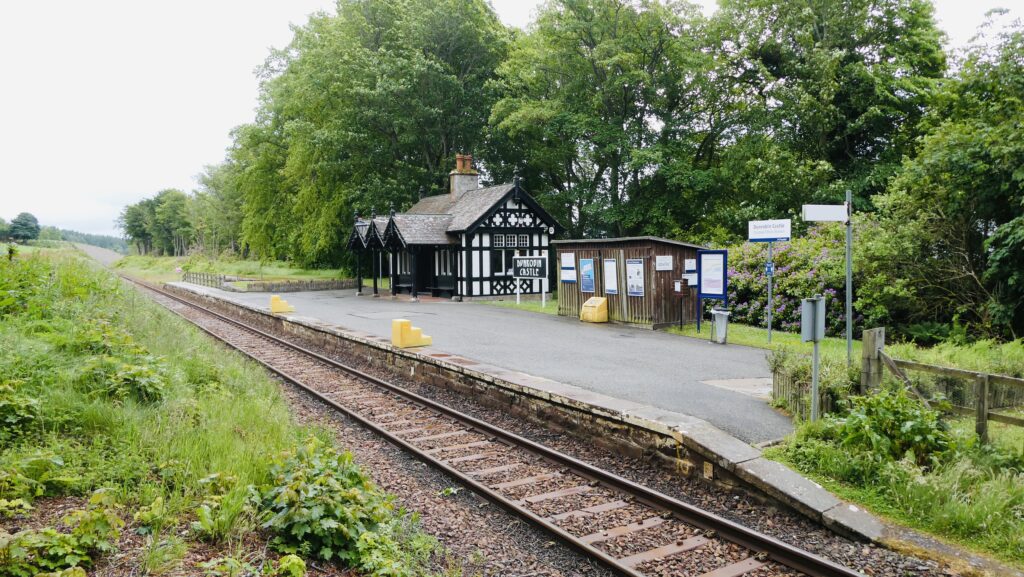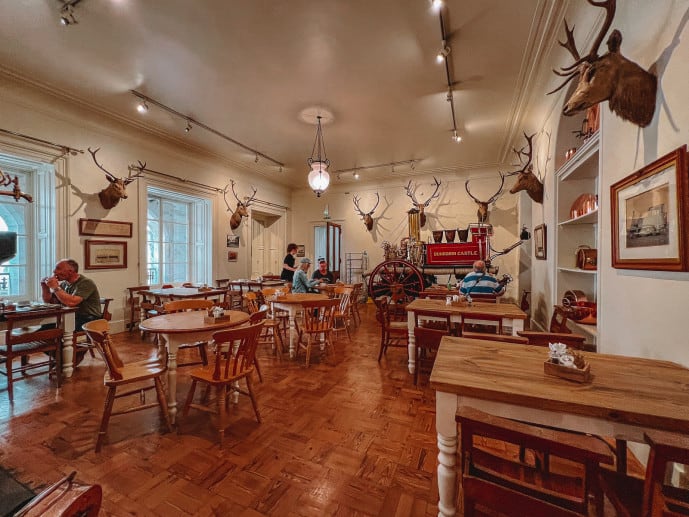
Dunrobin Castle is a classic storybook castle with its elegant turrets, grand exterior, and beautiful gardens. Located on the northeast coast of Scotland, it stands as one of the country’s most recognisable stately homes, attracting visitors with its charm and fascinating history.
A Castle with a Rich Heritage
While the current structure dates back to the 19th century, Dunrobin has origins that go back to the 14th century. Over the years, the castle has incorporated various architectural influences beyond the main Scottish Baronial style, including Gothic elements in its pointed arches and Renaissance details in its decorations. In 1835, Sir Charles Barry, known for his work on the Palace of Westminster, transformed Dunrobin into a grand residence for the 2nd Duke of Sutherland, modernising it while keeping some original medieval features.
The construction of Dunrobin Castle Railway Station in 1870 made it easier for visitors to reach the estate. A waiting room was added in 1902, which still stands today.
The Legacy of the Sutherland Family
Dunrobin Castle has a complicated history, particularly its connection to the Highland Clearances. Between 1811 and 1820, the first Duke of Sutherland and his wife, Elizabeth, oversaw the eviction of around 15,000 tenants, forcing many to move or emigrate. This part of the castle’s history influences how people view it today, sparking discussions about its past and the contrast between its beauty and the hardships faced by those displaced.
Inside the Castle

Dunrobin has 189 rooms, making it one of the largest houses in the northern Highlands. The interiors are richly decorated, reflecting the status of the Sutherland family, but not all rooms are open to the public, and photography is not allowed inside. Visitors can enjoy impressive views from the upper floors, looking out over the gardens and the North Sea.
Enchanting Gardens

The gardens, completed in 1850, are an example of formal landscaping influenced by the Gardens of Versailles. Sir Charles Barry prioritised symmetry and elegance, with each section centred around a fountain, creating a feeling of spaciousness. Covering 1,379 acres (558 hectares), the gardens offer a wonderful environment for visitors to explore.
Getting There by Train

Of course, you can get to Dunrobin Castle by car, but it is also accessible by train via the Far North Line (the train only stops at Dunrobin between 1st April and the 31st October). This offers a scenic journey through the stunning Scottish Highlands. Upon arrival, it’s just a short walk to the castle. The train ride provides beautiful landscape views, making it a great way to reach this historic landmark.
A Unique Visitor Experience
Guided Tours and Events
Visitors can participate in guided tours that provide insights into the castle’s history, including its architecture and social implications.
Tearooms

A visit to Dunrobin wouldn’t be complete without stopping by the tearoom, where guests can enjoy homemade soups, sandwiches, and a range of sweet treats, including local ice creams.
Falconry Displays

One of the highlights of any visit is the falconry display. Resident falconer Andrew Bunting demonstrates the art of falconry, showcasing birds of prey in flight, providing an exciting experience for guests.
Museum

The on-site museum, originally a summer house, features a diverse collection of artefacts, from Pictish stones to taxidermy specimens gathered by the Sutherland family during hunting trips. The exhibits offer fascinating insights into the estate’s varied history.
A Castle Like No Other
Dunrobin Castle is more than just an impressive building; it represents a blend of history, beauty, and tradition. Whether you’re exploring its grand rooms, walking through picturesque gardens, or watching a falconry display, there’s much to discover at this remarkable Highland location.
For more information about Dunrobin Castle, please visit https://www.dunrobincastle.co.uk/












